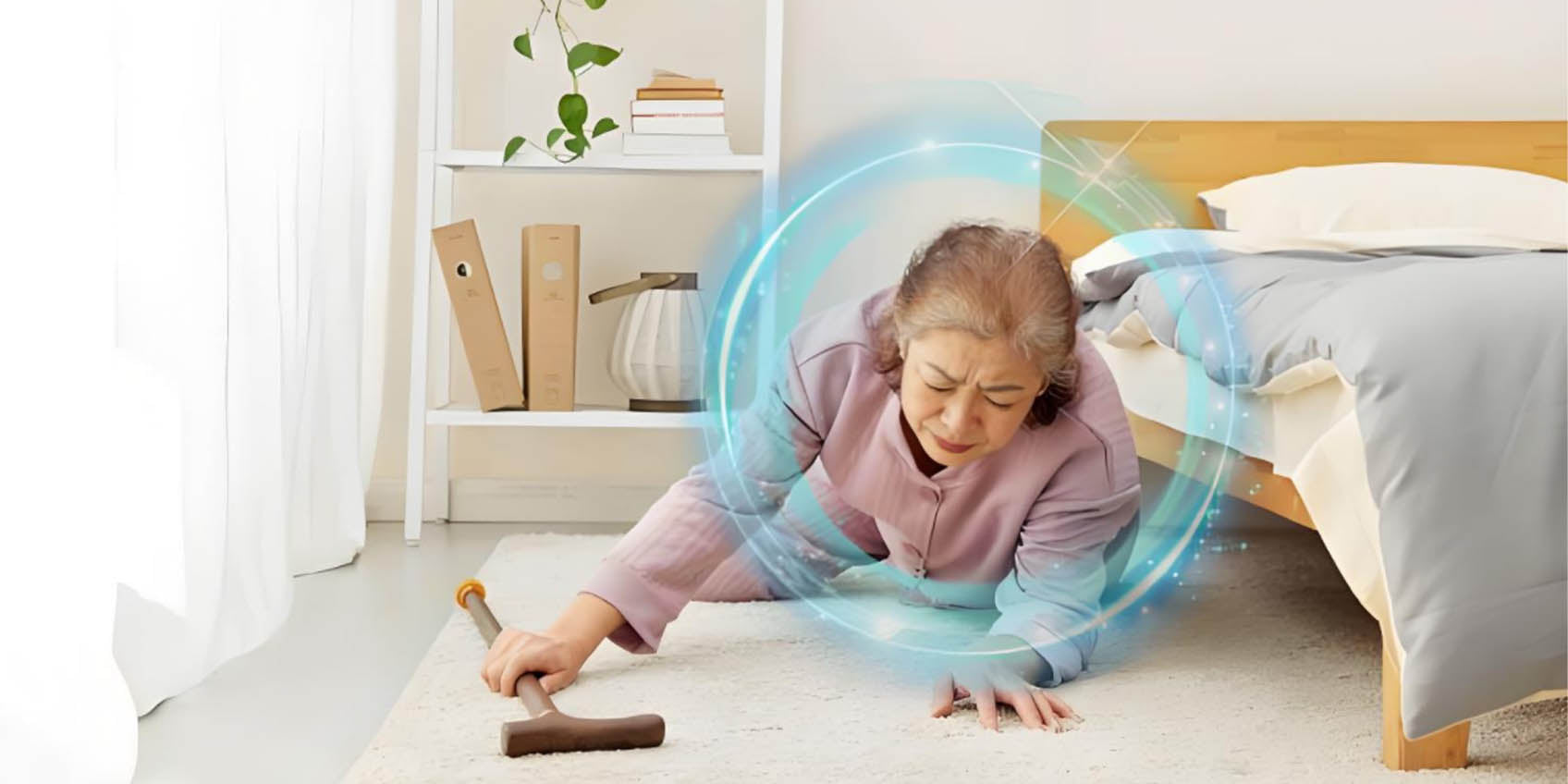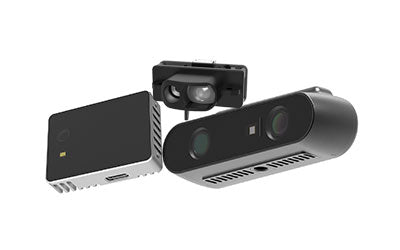Smart Fall Detection Systems:Enhancing Safety with Advanced Technology

The rapid growth of the Internet of Things (IoT), Artificial Intelligence (AI), and sensor technology has revolutionized many sectors, and smart fall detection systems are one of the key innovations shaping elderly care, healthcare, smart homes, and public safety. Traditional fall monitoring methods often rely on human observation or basic sensors, which may lead to delayed or inaccurate responses. However, thanks to ToF sensors, accelerometers, gyroscopes, and machine learning, modern fall detection systems offer highly accurate, real-time monitoring, allowing for quicker detection and more effective responses to fall incidents, significantly improving safety and quality of life for individuals.
What is Fall Detection?
Fall detection is a technology that leverages advanced smart sensors and algorithms to continuously monitor an individual’s movements and posture in real time. By recognizing abnormal motion patterns indicative of a fall, the system immediately sends alerts to caregivers or emergency responders, ensuring prompt intervention. This technology is essential for improving safety in elderly care, rehabilitation, and public safety, and plays a critical role in preventing fall-related injuries or complications, especially among vulnerable populations.
Smart Health Monitoring for Elderly Care
As the global population ages, falls have become a leading cause of injury among the elderly. Addressing this issue, smart fall detection systems help reduce the risks by continuously monitoring the elderly’s movements and posture.
-
Wearable Devices: Integrated devices like smartwatches, smart belts, and clothing sensors equipped with ToF sensors track the elderly’s activities and movements. These devices can detect falls by monitoring sudden shifts in posture or abnormal movement patterns, triggering an alert to caregivers or family members when a fall occurs.
-
AI and Machine Learning: AI-powered systems can improve detection accuracy by analyzing vast amounts of data to differentiate between falls and routine movements, reducing false alarms. By learning individual behaviors and health conditions, the system can customize monitoring based on a person’s unique activity patterns.
-
Non-Contact Technology: Modern fall detection systems use infrared sensors and ToF technology to monitor movements without direct contact, ensuring privacy while offering a seamless and unobtrusive monitoring experience.
Enhancing Home Safety with Smart Fall Detection
Smart fall detection systems are also essential in smart homes, offering added safety and security by ensuring that individuals can receive help during an emergency, even without physical assistance.
-
Automated Alerts: When a fall is detected, the system sends an automatic alert to designated contacts, such as family members, caregivers, or emergency services, reducing response time and ensuring swift assistance.
-
Integration with Other Smart Devices: The fall detection system can be connected to other smart home devices like smart cameras, smart door locks, and lighting systems to improve security, convenience, and overall safety. For example, lighting can automatically turn on when a fall is detected, or doors can unlock to provide easy access for emergency responders.
Health Management and Rehabilitation
Smart fall detection systems also provide valuable insights into the elderly’s daily activities and health status, which can aid in managing rehabilitation and overall health.
-
Activity Tracking: Beyond detecting falls, these systems can monitor the person’s daily activity levels. This data is invaluable for healthcare providers in assessing an elderly person's mobility, activity limitations, and rehabilitation progress, enabling tailored care plans.
-
Preventive Suggestions: Based on data from accelerometers and other sensors, the system can offer personalized health recommendations, such as exercises to improve strength or balance, helping to prevent future falls and improve overall physical health.
-
Continuous Monitoring: Long-term monitoring allows healthcare providers to track progress over time, identify trends or risks, and adjust treatment plans accordingly. This ongoing monitoring also helps to anticipate health issues before they become critical.
Public Safety and Smart Buildings
In public spaces such as hospitals, elderly care centers, and smart buildings, fall detection technology plays a crucial role in ensuring public safety and enabling fast responses in case of an emergency.
-
Real-Time Monitoring in Healthcare Facilities: In hospitals, nursing homes, and rehabilitation centers, fall detection systems can be installed to monitor patients' movements, detecting falls instantly. If a fall occurs, the system sends alerts to nurses, caregivers, or emergency teams, ensuring timely assistance.
-
Crowd Safety in Public Areas: In crowded environments such as shopping malls, stadiums, and museums, fall detection systems are equipped to detect falls in real-time. These systems alert security personnel or emergency responders, helping them address safety issues before they escalate.
-
Smart Cities Integration: In the context of smart cities, fall detection systems can be integrated with citywide emergency networks, surveillance cameras, and healthcare facilities. This interconnected approach ensures swift action and resource allocation during emergencies, enhancing the safety and efficiency of urban environments.
Ensuring Privacy with Smart Fall Detection
While providing advanced monitoring, smart fall detection systems prioritize user privacy by employing non-invasive, non-contact sensors that do not capture personal images, thus ensuring personal data is protected.
-
Anonymous Detection: The system only collects relevant movement data, such as posture changes and acceleration patterns, and does not store personal information, ensuring privacy.
-
Data Security: All collected fall detection data is encrypted and securely transmitted to authorized caregivers or emergency personnel, ensuring protection against data breaches.
-
Clear Privacy Policies: Users are informed about the types of data collected and how it is used, ensuring transparency and trust in the system.
Real-Time Monitoring and Efficient Response
The smart fall detection system continuously collects and analyzes data, providing real-time feedback and instant alerts to designated contacts, ensuring that fall-related incidents are addressed without delay.
-
Instant Feedback: When a fall is detected, the system sends alerts to caregivers, family members, or emergency services, triggering immediate intervention.
-
Seamless Integration with Emergency Systems: Smart fall detection can be integrated with existing emergency response systems to automatically contact relevant personnel, streamlining the overall response and improving the safety and well-being of individuals.
Conclusion
Smart fall detection systems, powered by AI, IoT, ToF sensors, and machine learning, are transforming elderly care, healthcare, and public safety by offering more precise, real-time fall monitoring and responses. These systems provide an invaluable layer of protection for individuals, ensuring prompt assistance during fall incidents and enhancing overall safety in both private and public spaces. As technology continues to evolve, smart fall detection will become even more efficient and personalized, offering greater peace of mind for individuals and their caregivers, and contributing to safer, healthier environments worldwide.
Synexens Industrial Outdoor 4m TOF Sensor Depth 3D Camera Rangefinder_CS40p
After-sales Support:
Our professional technical team specializing in 3D camera ranging is ready to assist you at any time. Whether you encounter any issues with your TOF camera after purchase or need clarification on TOF technology, feel free to contact us anytime. We are committed to providing high-quality technical after-sales service and user experience, ensuring your peace of mind in both shopping and using our products.
-
で掲示されます
CS40P






